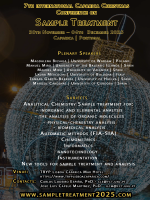Myosin light chain and calcium regulating protein differences in chronic musculoskeletal neck and shoulder pain
DOI: 10.5584/jiomics.v6i1.191
Abstract
Proteomic screening analysis has detected myosin light chain (MLC) as a protein implied to be involved in chronic musculoskeletal neck and shoulder pain. Several analyses of MLC proteins have stated a difference in phosphorylation being the determining factor for protein activation hence altered contrability of the muscle in i.e. senescence. In continuation of a previous publication, this study is an attempt to analyze the different MLC isoforms by mass spectrometry and immune-analyses in myalgic and healthy trapezius muscle. In the present study no differences in phosphorylation level between the corresponding individual proteins were detected using LC-MSMS and immunoblotting; instead we assigned different isoforms of regulatory MLCs. To further elucidate the contrability: calcium (Ca2+) regulatory proteins, sarco(endo)plasmic reticulum Ca2+ ATPase 1 (SERCA-1) and calsequestrine (CSQ) were analyzed by western blot. The analysis revealed a significantly increased abundance of SERCA-1 protein in the myalgic muscle and a significantly increased abundance of CSQ in healthy muscle. Myalgic muscle contraction patterns have in previous studies shown to differ from healthy muscle which may be connected to the Ca2+ availability in the muscle. Here we present the proteomic characterization of differences in Ca2+ regulating proteins and particularly regulatory MLCs in trapezius muscle of women with chronic musculoskeletal neck and shoulder pain.









